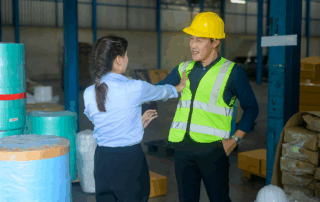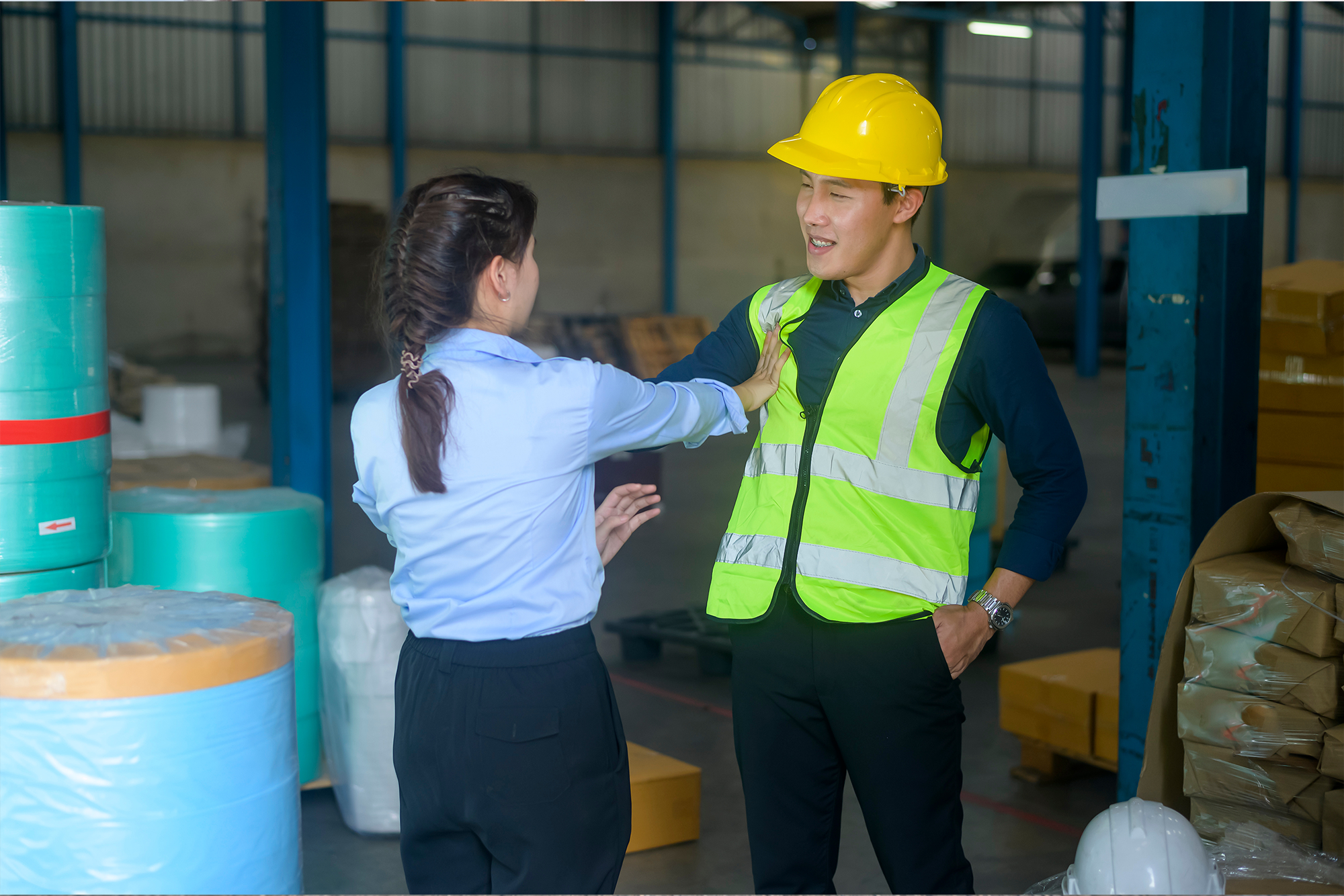The COVID-19 pandemic has impacted many businesses across a variety of industries, forcing them to rethink their daily operations to ensure the safety of their employees and the general public. This is no different for construction firms, where COVID-19 has led to project delays, significant job loss, and unprecedented uncertainty.
Many of these trends could affect businesses long term, making it all the more important for firms to stay abreast of where the industry is heading.
Economic Outlook
Business has been good for most construction firms over the past decade. In general, demand has been high, and a continued push of infrastructure improvements has kept firms busy. That was until COVID-19 hit and disrupted businesses across the country.
Among other things, the pandemic has led to widespread business shutdowns, introduced short- and long-term uncertainty, impacted project schedules, and disrupted supply chains. Such shutdowns could lead to further erosion of consumer confidence or even another round of mass layoffs.
However, even without COVID-19, the construction market was expected to harden moving into 2021. This shift was largely due to catastrophic loss activity associated with natural disasters, the increased cost of litigation and so-called mega claims—claims over $3 million. These claims were particularly prevalent in the construction industry, which accounted for 37% of claims between $3 million and $5 million, 42% of claims between $5 million and $10 million, and 46% of claims above $10 million.
Compounding these concerns, the cost of building materials, such as concrete and brick, is set to rise this year. Over the last year, the cost of lumber and plywood alone has increased by 26.7%.
As a result of such disruptions, firms are expected to face increased pressure on their bottom line. It’s crucial for businesses to prioritize efficiencies and cost-saving opportunities. Overall, businesses need to focus on prevention, working with their trusted insurance advisor and leveraging data and analytics to anticipate exposures and make educated decisions on how to address them.
Labor Trends
In recent years, hiring for skilled trades has been a continued challenge for many businesses. In fact, the labor market is so tight for the construction industry that, according to the Associated General Contractors of America, 82% of construction companies believe filling positions will be difficult for the foreseeable future. Additionally, Bureau of Labor Statistics data suggests that, since 2014—while the number of job openings has almost doubled—the number of new hires has only increased by 14%. While this challenging labor market existed pre-COVID-19, the pandemic has no doubt further complicated matters.
According to a recent survey by the Associated General Contractors of America (AGC), approximately 33% of construction firms were forced to furlough or terminate employees as a result of the pandemic. And while many of these firms have asked laid-off workers to return, many employees refused, citing unemployment benefits, virus concerns or family responsibilities as reasons they wouldn’t be returning.
Additionally, despite the fact that COVID-19 has left many out of work, construction firms have still found it difficult to fill open positions. According to the AGC survey, 52% of respondents cited difficulties filling openings for laborers, carpenters and equipment operators, and 60% of firms had at least one unfilled hourly craft position as of June 30, 2020.
As the skills shortage surges and firms are unable to attract talent, businesses may struggle to meet project demands, maintain deadlines and contain costs. To combat these shortages, some firms are supplementing workers through automation or becoming less selective in regard to who they hire. However, businesses need to be careful with this approach, as inexperienced workers can open businesses up to potential safety issues. According to OSHA, workers under the age of 25 are twice as likely to be injured on the job as their older counterparts.
Construction Starts
According to Dodge Data & Analytics’ 2021 Dodge Construction Outlook, total U.S. construction starts are expected to increase by 4% in 2021 to $771 billion. This is in spite of the fact that—given the impact of COVID-19—2020 was wrought with uncertainty, which greatly impacted overall construction starts. In fact, from June to July of 2020, construction starts were down by 31%.
When it comes to specific construction types, single-family housing starts are expected to rise by 7% in 2021. This increase is likely due to historically low mortgage rates and a general consumer desire to live in less densely populated areas due to the pandemic. However, the dollar value for multifamily construction is expected to drop by 1%.
In terms of commercial building starts, dollar values will increase by 5% this year. In particular, warehouse construction will see significant gains as large e-commerce companies continue to build out their logistics infrastructure. Looking at specific industries, the dollar value of manufacturing plant and public works construction starts will remain flat or see little improvement.
Still, experts believe that overall business and consumer confidence will improve over the year, particularly as COVID-19 vaccines are more widely distributed. However, when it comes to construction starts, businesses should expect a slow recovery.
Prefabricated and Modular Construction
In terms of construction processes, prefabricated and modular construction are expected to see huge boosts this year.
In prefabricated (prefab) construction, elements of a project are built off-site. In many cases, these elements are created in controlled, factory-like environments and, once completed, are shipped to the job site for installation.
With modular construction, instead of prefabricating smaller elements of a project, entire units of a building are constructed off-site. Completed units are then moved to the job site, where they are stacked on top of other modular components to create one structure. Some modular construction processes allow for things like plumbing and electrical fixtures to be preinstalled.
These processes are particularly beneficial in a post-pandemic world, as manufactured buildings are often built in a way that promotes low worker density. Additionally, given the ease of moving prefabricated and modular materials, these construction processes are great for erecting temporary structures, which can be useful during these uncertain times when operations can change at a moment’s notice.
Exoskeletons
On an annual basis, overexertion injuries account for around $15 billion in direct costs to employers. This type of injury is particularly common among construction workers who perform strenuous physical activities for the majority of their workdays.
When it comes to reducing these types of injuries, the use of exoskeleton technology is promising. Exoskeletons are designed to augment human strength, providing assistive force when individuals lift or move objects. This can help protect the wearer from strains, sprains and similar overexertion risks. As it stands, exoskeletons are becoming adopted across a variety of industries, and there are over a thousand exoskeleton units currently in use at job sites around the world.
Drones
For construction firms, the use of commercial drones allows them to streamline their work and reduce the risk of injury. And these tools are becoming increasingly common in the industry, as experts have said construction is one the fastest growing adopters of commercial drones.
Drones allow construction businesses to survey a job site from an aerial view, which in turn allows them to identify potential safety issues, map out the job site or even estimate material quantities. Furthermore, drones allow businesses to inspect areas that may be difficult, time-consuming or unsafe to evaluate. As an example, using drones, an employer could inspect a job site for hazardous conditions. Without this technology, firms would otherwise have to put a worker in harm’s way to complete such an investigation.
Wearables
Safety is a primary concern on the job site, and it’s critical for businesses to leverage any and all opportunities to better protect their workers and reduce accidents. One promising technology is wearables, which refer to electronic devices that are worn on the body.
According to a U.S. Chamber of Commerce report, only 6% of contractors used construction wearables in 2018. However, that percentage is expected to rise to 23% in 2021 as more firms adopt this technology.
Using these devices, organizations can track specific health and safety metrics. As an example, a construction firm could outfit their employees with wearables to track potential risky job site behaviors, monitor workers for signs of fatigue or warn workers of nearby hazards.
Moving Forward
This article offers a glimpse of the potential challenges and opportunities facing construction firms in 2021. And while there’s inevitably a sense of uncertainty when it comes to anticipating industry trends, organizations that take the time to prepare will be better equipped to navigate potential exposures that may arise.
To ensure your firm is taking the proper steps to manage risks and control losses, it’s critical to work with industry experts who have the necessary knowledge and experience. Contact a team member near you at INSURICA.com/our-team to learn more.
This Risk Insights is not intended to be exhaustive nor should any discussion or opinions be construed as legal advice. Readers should contact legal counsel or an insurance professional for appropriate advice. © 2021 Zywave, Inc. All rights reserved.
About the Author
Share This Story
Related Blogs
Trump Administration Reshapes Health Plan Oversight
The Trump administration has issued a series of executive orders aimed at recalibrating federal oversight of employer-sponsored health plans. These directives target unpublished rules and agency enforcement priorities, signaling a shift toward deregulation and increased flexibility for plan sponsors.
Keeping Our Workplace Violence-Free
Although we do our best at to keep the workplace safe, violence inflicted by an outsider or between employees remains a serious safety and health issue. It can occur inside or outside the workplace and can range from threats and verbal abuse to physical assaults and homicide. In fact, according to the United States Department of Labor, workplace violence is the fourth-leading cause of fatal occupational injury in our country.
Understanding Educators Legal Liability (ELL)
Educators face unique professional exposures that go beyond standard general liability. That’s where Educators Legal Liability (ELL) coverage comes in. Understanding Educators Legal Liability is critical for school administrators, as it protects against claims related to employment practices, student rights, professional duties, and more. From wrongful termination to student disciplinary disputes, ELL can provide defense and indemnity for claims that other policies may exclude.








